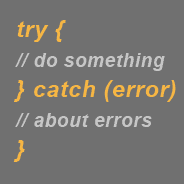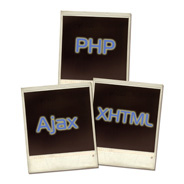Slide-Down Mega Drop-Down Menus with Ajax and jQuery

These looked like a cool and simple thing to reproduce, so I gave it a shot and came up with something that I think works pretty nicely.
It wasn’t as simple as I thought, and I don’t think my code is the greatest, so I’m open to suggestions. I think this could form the basis for a jQuery plugin but I’ve never created a jQuery plugin so holding I’m off on that for now.

 A little over a month ago, I published a fast-paced
A little over a month ago, I published a fast-paced  I don’t consider myself an application developer. I think I have some knowledge of application design principles, but it’s something I’d like to improve on, especially in the area of JavaScript and Ajax-driven applications.
I don’t consider myself an application developer. I think I have some knowledge of application design principles, but it’s something I’d like to improve on, especially in the area of JavaScript and Ajax-driven applications. If you’ve ever clicked on a footnote link in a Wikipedia article, you’ve probably noticed that two things happen: (1) the link brings you to the footnote section at the bottom of the page; and (2) the selected footnote is highlighted with a different color. In a list of footnotes, this feature makes it easy for the reader to visually access the appropriate footnote.
If you’ve ever clicked on a footnote link in a Wikipedia article, you’ve probably noticed that two things happen: (1) the link brings you to the footnote section at the bottom of the page; and (2) the selected footnote is highlighted with a different color. In a list of footnotes, this feature makes it easy for the reader to visually access the appropriate footnote. Not too long ago I wrote an article for Six Revisions called Getting Started with jQuery that covered some important things (concept-wise) that beginning jQuery developers should know. This article is the complete opposite; there’s no concepts, no principles, and very little lecturing — just some straight example code with brief descriptions demonstrating what you can do with jQuery.
Not too long ago I wrote an article for Six Revisions called Getting Started with jQuery that covered some important things (concept-wise) that beginning jQuery developers should know. This article is the complete opposite; there’s no concepts, no principles, and very little lecturing — just some straight example code with brief descriptions demonstrating what you can do with jQuery. It’s common nowadays for bloggers to monetize their blogs through the use of strategically-placed ad blocks. BuySellAds ad blocks are the most popular in the web design community. You’ll sometimes also see AdSense ads placed at the top of articles or in other spots.
It’s common nowadays for bloggers to monetize their blogs through the use of strategically-placed ad blocks. BuySellAds ad blocks are the most popular in the web design community. You’ll sometimes also see AdSense ads placed at the top of articles or in other spots. Recently, while doing research/work on a completely unrelated topic, I came across the beautiful illustrations on
Recently, while doing research/work on a completely unrelated topic, I came across the beautiful illustrations on  Last week I posted a tutorial that demonstrated using a simple application how to implement
Last week I posted a tutorial that demonstrated using a simple application how to implement  If you’ve done your best to keep up with web development trends over the past five years or more, then it’s likely that you’re familiar with the concept of
If you’ve done your best to keep up with web development trends over the past five years or more, then it’s likely that you’re familiar with the concept of  One particular design trend that has caught my attention of late on web development and graphic design blogs is the fancy gray border that surrounds images in blog posts. There are subtle variations of it around the web, which you can see on a number of blogs and tutorial sites.
One particular design trend that has caught my attention of late on web development and graphic design blogs is the fancy gray border that surrounds images in blog posts. There are subtle variations of it around the web, which you can see on a number of blogs and tutorial sites.